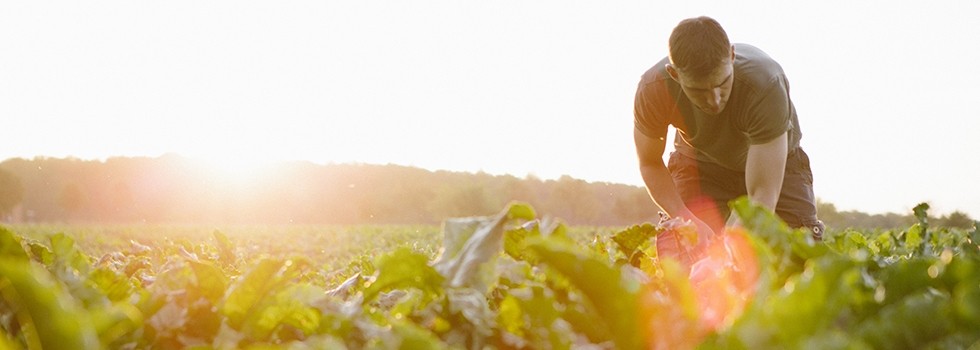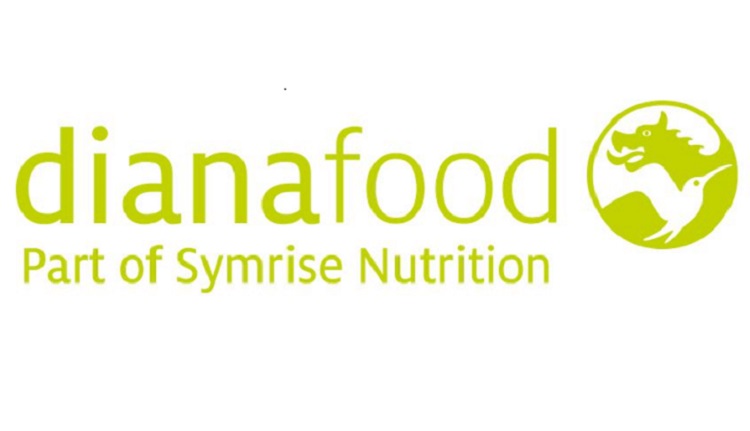Promotional Features
Diana Food: Building an organic ingredient portfolio to meet consumer demand
Demand for organic food is booming as consumers prioritise products that are traceable, healthy and better for the environment. Those factors underpinned a more than 60% increase in European sales of organic food in recent years and are driving greater uptake in other key markets, including China. To meet soaring demand, food manufacturers need trusted partners that share modern consumers’ commitment to local sourcing, animal welfare and great taste.
Retail sales of organic food in Europe totaled €37.3bn in 2017, up from €22.7bn in 2012.1,2 The 64% increase in sales was underpinned by particularly strong demand in France and Germany, which ended 2017 with organic food markets worth €7.9bn and €10.0bn, respectively. Italy, Switzerland, Sweden and the UK also grew quickly over the analysed period, ending it with organic food markets worth more than than €2bn.
The trends seen in Western Europe are part of a wider, global shift toward organic food. In 2017, the Chinese organic food sector was worth €7.6bn, making it the fourth biggest market globally. In 2012, estimates of the value of the Chinese organic food market ranged from €791m to around €2bn.3
Surveys run around the world show people buy organic products because they perceive them to be healthier, tastier, safer and better for animals and the wider environment.4,5 Those perceptions raise the bar that food manufacturers must clear to satisfy the demands of consumers. To deliver what consumers want, manufacturers need to ensure that every step in the supply chain, from farm to fork, adheres to the high standards needed to gain and retain organic certification.
Recognising the pressure that places on manufacturers, Diana Food has invested to expand its range of organic products. With local, fully traceable supply chains and global certifications, Diana Food is equipped to help manufacturers meet demand for organic products in Europe and beyond.
Investing to deliver organic chicken
Diana Food’s commitment to the organic market is illustrated by its investment in chicken. A rising number of consumers are seeking out organic chicken products because of the better animal welfare practices and absence of routine antibiotic use.
Research suggests animal welfare is a concern for most consumers and that people will pay far more for meat that is certified organic.6,7 Organic chickens, which are typically slow growing breeds, are kept at relatively low densities and have access to outdoor space. Research suggests such factors improve how chickens taste.8
Organic chickens are also raised without the routine use of antibiotics, potentially cutting the risk of drug-resistant microbes emerging. The result is a food in line with the demands of consumers.
Manufacturers want to provide products that meet consumer demand for organic chicken but their ability to do so rests on the availability of ingredients that conform to the required standards. Diana Food introduced a liquid chicken broth and dehydrated meat products to support these companies.
All products in Diana Food’s organic chicken range are sourced within France along a traceable supply chain. Diana Food’s suppliers and farms are very regularly audited to check they share its commitment to organic standards and animal welfare, thereby ensuring that its chicken products meet the needs of manufacturers and consumers.
Meeting demand for organic colours
Diana Food has applied the same ethos to the creation of a range of organic colours. The result is a range of five colours derived from beetroot, three types of carrot and the blue-green algae spirulina.
The colours comply with European organic legislation and are made without citric acid, helping food manufacturers to create clean label pre-packed food products that meet the requirement for 95% of the ingredients to be organic. Diana Food has designed the products to have vibrant shades without a strong taste.
Two of the colours, red beet and purple carrot, are derived from plant varieties exclusive to Diana Food. Working with seed companies, Diana Food developed the varieties to obtain the best possible colour. Diana Food is in direct contact with farmers who grow the red beet and purple carrot plants and collaborates with them to set sowing and harvesting dates.
That backward integration through close relationships with farmers is representative of Diana Food’s broader focus on full traceability, both in its portfolio of colours and wider range of organic products.
Accessing the Chinese market
Diana Food’s wider portfolio features a range of organic fruits and vegetables that are available as powders, flakes and crunchies. The ingredients made from raw materials, which a team of Diana Food agronomists selects with farmers, comply with European and US organic certifications, enabling manufacturers to use them to access the three biggest markets for their products.
A growing number of Diana Food’s ingredients are also organic certified in the fourth biggest market, China. Diana Food has China Organic Product Certification for its apple, acerola, banana, raspberry, strawberry, carrot, spinach and tomato ingredients, differentiating it from many ingredient suppliers. Companies need Chinese certification to sell products labelled as organic in the country.
To achieve Chinese certification, Diana Food had to undergo an audit that differs from that used by authorities in Europe. One requirement unique to Chinese organic certification is the need to prove that the quantity of raw material required was present in the field at the time of the audit.
The additional effort of the audit is justified by the size of the Chinese market. China’s organic market is growing fast, driven in part by what the Research Institute of Organic Agriculture and International Federation of Organic Agriculture Movements called a “surge in demand for organic baby food.”2
That surge, which made China the largest infant organic formula market in 2014, is underpinned by rising parental concern about what they feed their babies. One survey found seven of the eight infant formula brands favoured by Chinese consumers are certified organic.9 China is also a rare example of a country where consumers prefer imported organic food over domestic products.10
Those factors are behind strong demand for organic, European-sourced baby food in China. Diana Food’s products, specifically its sweet, nutritious and easily digestible banana ingredients, are helping manufacturers meet the demand. The ingredients, which are made from 100% organic banana, are available as a puree, powder and flakes, enabling manufacturers to use them in a wide range of products including cereals, snacks and growing-up milk.
Becoming a trusted organic partner
Diana Food’s investment in its organic supply chain has resulted in a large portfolio of concentrates, powders, flakes, purees and inclusions with shelf life and storage attributes tailored to the needs of manufacturers. These organic ingredients are used in a wide range of applications and markets but the ethos and approach behind them is the same.
The focus is always on helping food manufacturers meet the needs of consumers. That focus has led Diana Food to work closely with farmers to create local, backward integrated supply chains with high animal welfare standards.
Manufacturers that work with Diana Food to access these resources will gain a trusted partner that understands the organic food market. Backed by that support, food manufacturers can create global organic food portfolios that meet fast-rising demand for healthier, tastier and more sustainable food.
References
1. ORGANIC IN EUROPE: PROSPECTS AND DEVELOPMENTS. Available at: https://shop.fibl.org/CHde/mwdownloads/download/link/id/634/?ref=1. (Accessed: 1st October 2019)
2. The World of Organic Agriculture: Statistics and Emerging Trends 2019. Available at: https://shop.fibl.org/CHen/mwdownloads/download/link/id/1202/?ref=1. (Accessed: 1st October 2019)
3. The World of Organic Agriculture: Statistics and Emerging Trends 2014. Available at: http://orgprints.org/25172/1/willer-lernoud-2014-world-of-organic.pdf. (Accessed: 1st October 2019)
4. Ergönül, B. & Ergönül, P. Consumer motivation for organic food consumption. Emir. J. Food Agric 27, 416 (2015).
5. Consumer Attitudes towards Organic Food: Survey of the General Public. Available at: http://www.organiccentrewales.org.uk/uploads/ca_survey_br_phase_2_report.pdf. (Accessed: 1st October 2019)
6. Clark, B., Stewart, G. B., Panzone, L. A., Kyriazakis, I. & Frewer, L. J. A Systematic Review of Public Attitudes, Perceptions and Behaviours Towards Production Diseases Associated with Farm Animal Welfare. J. Agric. Environ. Ethics 29, 455–478 (2016).
7. Van Loo, E. J., Caputo, V., Nayga, R. M., Meullenet, J.-F. & Ricke, S. C. Consumers’ willingness to pay for organic chicken breast: Evidence from choice experiment. Food Qual. Prefer. 22, 603–613 (2011).
8. Stadig, L. M. et al. Effects of free-range access on production parameters and meat quality, composition and taste in slow-growing broiler chickens. Poult. Sci. 95, 2971–2978 (2016).
9. Cui, H. Parent Preferences for Baby Formula in China and Potential Implications for US Dairy Product Exports. (2016).
10. Thøgersen, J., Pedersen, S. & Aschemann-Witzel, J. Impact of Country of Origin and Organic Certification on Consumer Food Choices in Developed and Emerging Economies. Abstract for EMAC 2018. in (2017).

